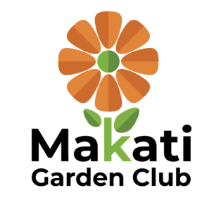Cebu Hillylands
Makati Garden Club assisted in the rehabilitation of the 29,000-hectare Central Cebu Protected Landscape (CCPL), also called the Cebu Hillylands. Now on its 27 th year, PBSP (Philippine Business for Social Projects) aims to reforest 30 hectares per year. Together with Makati Garden Club, PBSP annually raised funds through their collaboration with FESTIVAL OF TREES, an annual live and silent auction that was held at the Manila Polo Club.




Maqueda Bay
During the 1960s through the 1980s, the mangrove forests that lined Maqueda Bay were killed along with the fish that inhabited these coastal waters due to dynamite fishing.
To sustain Samar’s efforts on the protection and conservation of its coastal waters, various stakeholders of the province joined hands in formulating an integrated plan on Coastal Resource Management (CRM). The Provincial Agriculturist Office teamed up with Philippine Business for Social Progress (PBSP), along with Makati Garden Club (MGC) as well as Samar State University-College of Fisheries and Marine Sciences, Gugma Han Maqueda Bay, Regional Fisheries Training Center, Bureau of Fisheries and Aquatic Resources, and the municipal Fisheries and Aquatic Resource Management Councils (FARMCs) for the planning.
Today, new mangrove forests have been planted, and the fisherfolk are tasked with piloting the waters to prevent dynamite fishing. Many towns and barrios are now thriving from the workshops and classes that PBSP established from the funds raised by MGC from their annual fund-raiser Festival of Trees.





Marikina Watershed
The term “Marikina Watershed” is sometimes used to specifically refer to the protected area, in the Province of Rizal which forms the upper area of the drainage basin of the Marikina River.
It is also the river’s entire drainage basin, from the Sierra Madre Mountains of Rizal Province all the way to the Napindan area in Pasig, where its mouth empties into the Pasig River.
The Upper Marikina River Basin Protected Landscape had been named the Marikina Watershed Reservation until November, 2011, when President Benigno S. Aquino III upgraded its status from “reservation” to “protected landscape.” The Marikina Watershed Reservation was originally created on July 26, 1904, by virtue of
Executive Order No. 33, which was issued by then Governor-General of the Philippine Islands Luke Edward Wright. The order set aside a tract of land in the Province of Rizal to be known as the “Mariquina Reservation.” Its stated objective was “to protect the watershed of
the Mariquina River, the source of the water supply of the city of Manila.”

In 2010, PBSP launched its Marikina Watershed Initiative Program as a response of the private sector to the deluge caused by Typhoon Ondoy in September 2009. Makati Garden Club joined in the project and dedicated funds raised from their last Festival Of Trees fund-raising event to aid in the reforestation of more than 9,000 hectares of denuded forests.
The deforestation of the Marikina Watershed largely contributed to the record-breaking floods
in Metro Manila and neighboring cities at that time. The lack of trees in the watershed left the ground unable to absorb rainwater, which flowed to the lowlands instead.
To date, PBSP and its member-companies have reforested 318 hectares and planted around 200,000 native fruit-bearing trees that will also provide sustainable source of livelihood for the locals.




The Green Thumbs Marikina Watershed Initiative Program critical for its role as the catch basin for the waters than drain to Marikina and Pasig river supports about 10,387 families living below poverty threshold its denuded condition is seen as the primary reason of the massive flooding during Typhoon Ondoy and recently hit by the southwest monsoons. The Marikina Watershed aims to reforest about 9,520 hectares or 34% of the total land area of the UMRBPL initiated by Philippine Disaster Recovery Foundation in partnership with the private sector PBSP and MGC’s Festival of Trees as the lead in livelihood development Montalban-Wawa sub-river basin as the adopted site of PBSP The Marikina Watershed Initiative Program.
- Ayaas-Kayrofa Farmers Association composed of 52 CARP beneficiary farmers newly organized after their cooperative became inactive due to lack of income generating projects and empowered leaders
- Inigan Upland Farmers Association organized by DENR for their upland development program in 2008 with 112 watershed settlers members who hold the beneficiaries DELOITTE for MARIKINA WATERSHED reforestation of 3 hectares planting of 1,875 indigenous trees financial management training 20 leaders about basic financial management and bookkeeping Joining the Initiative


